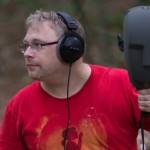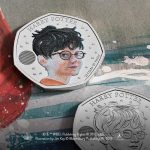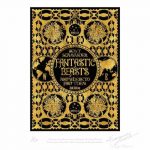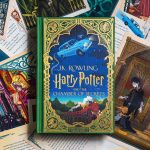Gareth Fry Records in the Heart of the Amazon for ‘The Encounter’

Mar 05, 2017
Art, Audio, Crew Interviews, Fry, Gareth Fry, Harry Potter and the Cursed Child, News
Gareth Fry, the sound designer for ‘Cursed Child,’ exhibited an extreme amount of dedication while working on his latest project, The Encounter, and had more than 500 mosquito bites to prove it. The production is based on the true story of a National Geographic photographer that gets stranded in the Amazon rainforest.
Loren McIntyre traveled to the Amazon in 1969 with the goal of photographing a remote Amazonian tribe. His destination was the Javari Valley in Brazil. When McIntyre first arrived, his translator contracted malaria and was sent home, however he decided to stay and managed to make contact with the tribe.
He followed them around for months photographing them and eventually becoming lost in the jungle. Unable to fully communicate with the locals, he encountered many dangerous scenarios, including hostile tribe members trying to kill him along with all of the dangers of the jungle itself.
For a production that is primarily set deep within the Amazon rainforest, Fry wanted the audience to feel as immersed in the setting as possible. Knowing that it would be impossible for the audience to fully appreciate the jungle’s atmosphere with just visual props and set design, Fry did the next best thing making auditory sensation the primary element of the show.
He wanted to be able to capture the fear, anxiety, and confusion of the photographer as well as the darkness, heat, and danger of the jungle. To create an even more realistic experience, Fry himself took new recordings for the show directly from the heart of the amazon rainforest. Fry spoke to Stuff about the experience.
“You couldn’t do the usual theatrical things, with painted backdrops and bits of branches everywhere representing the Amazon, or whatever. It’s such an epic, yet claustrophobic place and the best way to create a sense of actually being there was through sound.”
Fry spent a whole week on site in Brazil recording for the project. To make the production as authentic as possible, he made it a point to go back to the Javari Valley specifically and even met with descendants from the tribe McIntyre spent time photographing.

“On one hand, it was f…ing miserable. Hot and humid, tramping with recording equipment into jaguar country, carting around this big heavy head with binaural microphones attached. But it was incredible to spend a week living with an indigenous community in the Amazon rain forest, and the sounds we brought back were amazing!”
When Simon McBurney wrote The Encounter, he knew he wanted to make sound the key element of the show and so he hired Fry to help him recreate the experience of the amazon. Unlike most productions that feature stereo sounds and are projected from around the audience with speakers, The Encounter comes with binaural headphones for each audience member.
Achieving the most realistic sound possible took a lot of work and expensive equipment. One of the most obscure pieces being a fake human head with the same density and shape as the head of an average person that was fitted with $30,000 microphones that capture sound exactly the same way a human ear would capture them. Fry had to carry this head with him around the rainforest as he searched for the perfect sounds and locations to record.

“The great thing about listening to recordings made using that binaural head is that it places you in the exact sonic world where that head was used to make the recording. You might be sitting in London or Auckland, but you’ll be coming with us to the Amazon rain forest. We use a big wall of those sounds to help transport you into this story.”
Another benefit to the use of headphones rather than speakers is that the production is equal to all audience members no matter what section of the theater they are seated in.
“No matter how far you are from the stage, it’s an equally intimate experience, because it’s taking place, essentially, inside your head. Even in the back row, you still feel as though the actor’s whispering the story directly into your ear as you travel along some jungle track.”
The actor Fry is speaking of is Richard Katz, a member of the UK’s Royal Shakespeare Company, who stands on stage dramatizing the story for the audience. He is the only actor in the performance.
Another incredible feature of The Encounter are the live sounds that Katz adds to Fry’s background jungle recordings through a second binaural head, like the one that accompanied Fry to the amazon. The head is nicknamed Fritz, after the German inventor Fritz Sennheiser.
The head is stationed on the center of the stage and as Katz narrates the story for the audience he also creates bits of different sounds either through a speaker or with props as he walks around Fritz. The result is birdsong so lifelike that audience members often turn in their seats involuntarily as an imaginary bird flies around them and the sound of a plane engine overhead that is so realistic that people actually duck their heads.

“Yes, that’s right. The sounds are so three-dimensional people spin around in their seats! People are so used to hearing fake stereo sound that a real binaural recording leaves them absolutely blown away.”
Katz creates these sounds simply by moving the wireless speaker in certain patterns around Fritz. He even creates realistic fire by crinkling plastic chip bags and uses water sloshing around inside a bottle to simulate the sounds of a flood.

Fry attributes much of the show’s success to the power of how sound can provoke certain human emotions.
“Our connection with vision is pretty rational and naturalistic; we think we see the world as it really is. But our hearing is this really emotional thing that sometimes goes way beyond logic. Just think about music. There are all sorts of theories about how it evolved and what music even IS, but we know it has a profound emotional effect on people and that effect changes from person to person and culture to culture, depending on each listener’s previous experiences.
The action you’re seeing on screen might be extremely sentimental, but if there’s a big Hollywood string-crescendo, it might still bring tears to your eyes. Other sounds set off powerful feelings, too. When we hear babies crying, we’re biologically wired to release the bonding hormone oxytocin. The sounds of screaming, police sirens and breaking glass can trigger an adrenaline response, even if we’re watching them on TV and perfectly safe. Fast music with a prominent beat is exciting because the tempo mimics our heartbeat when we’re running and so on.”
Fry is clearly very passionate about his work and has an incredible understanding of how sound can affect the emotions of an audience. If you missed the performances in London, Edinburgh, and New York you may be able to catch Complicite Theatre Company’s The Encounter from March 15 to 19 at the Aotea Centre’s ASB Theatre as part of the 2017 Auckland Arts Festival.





